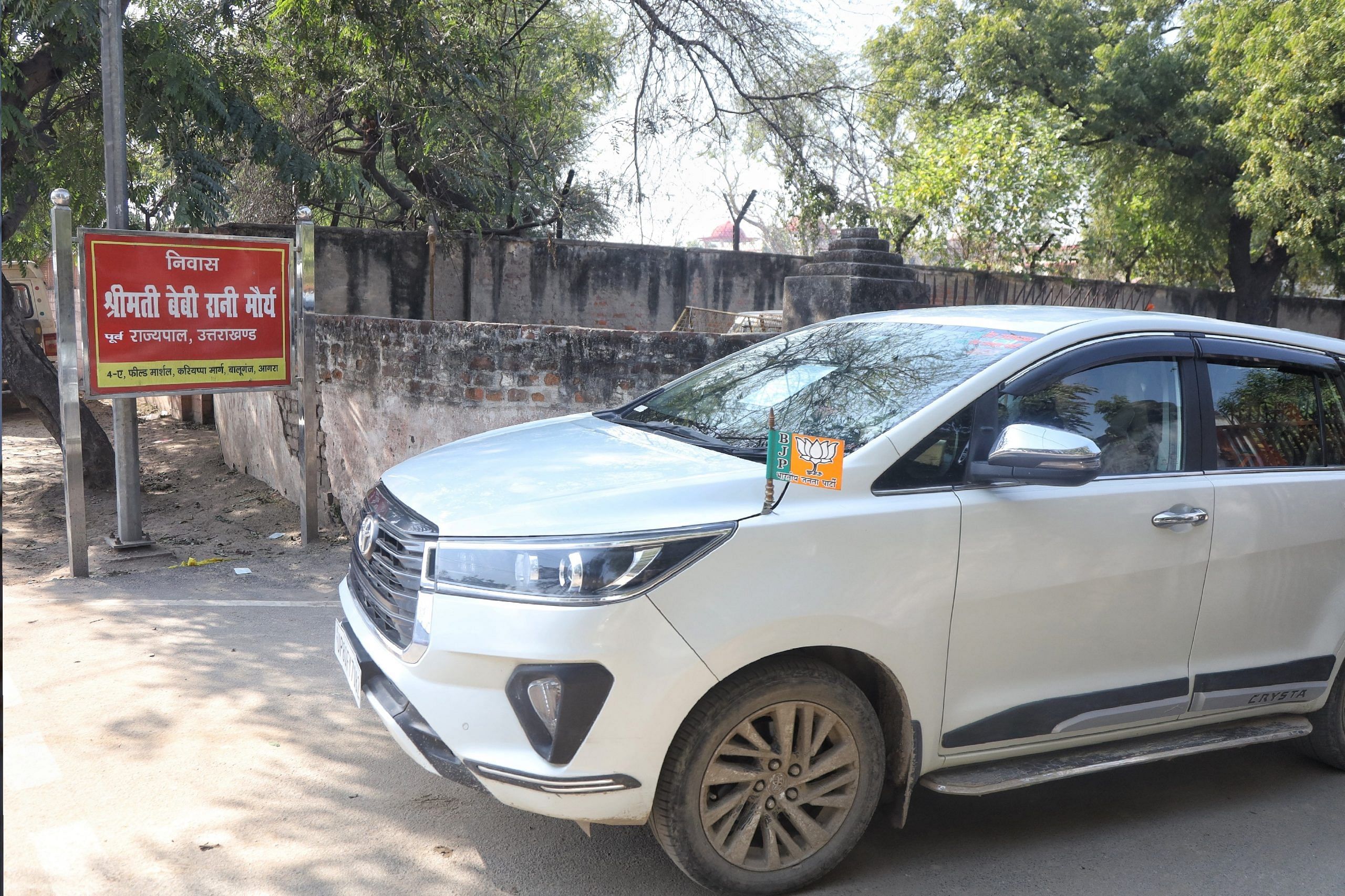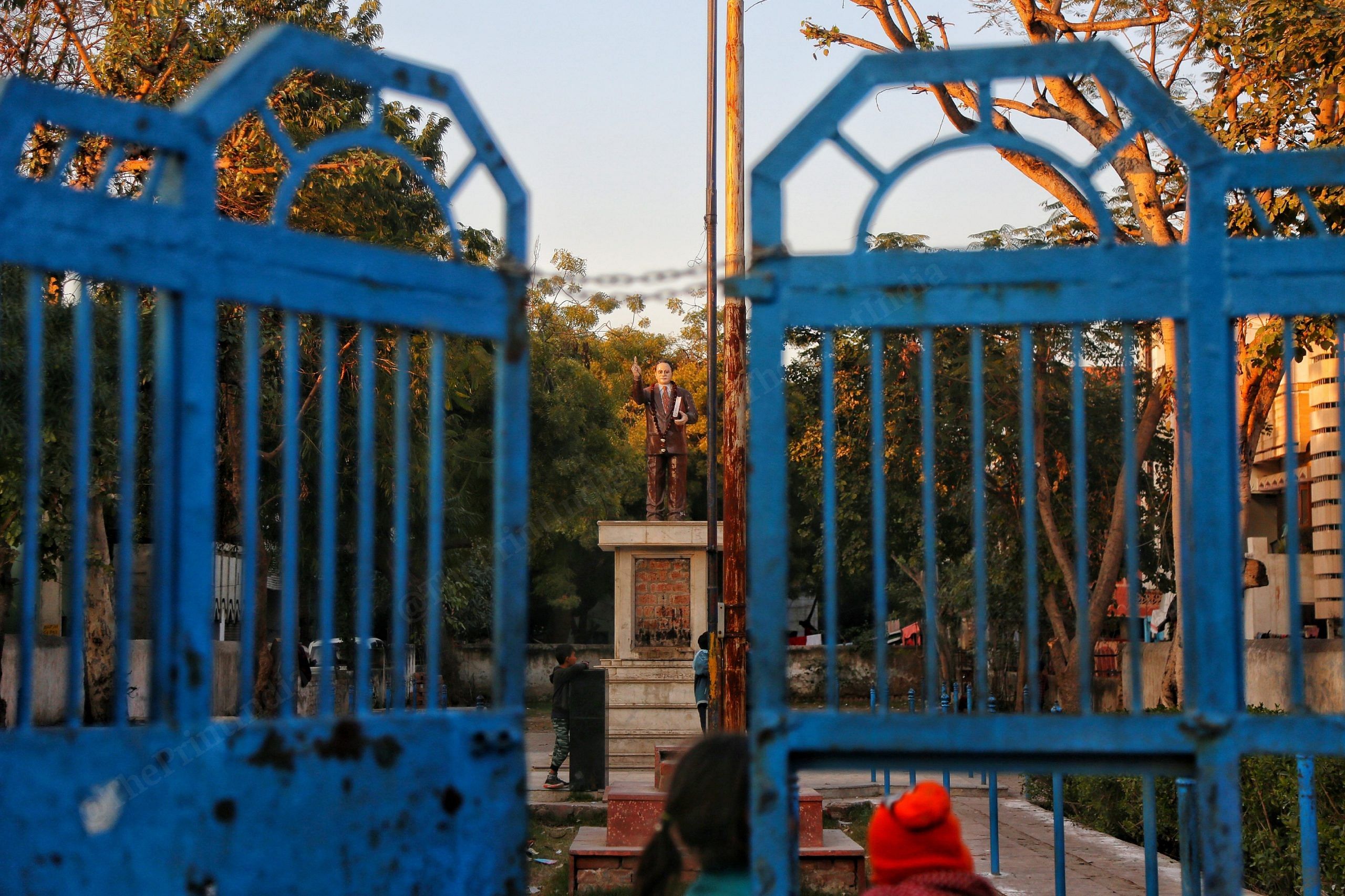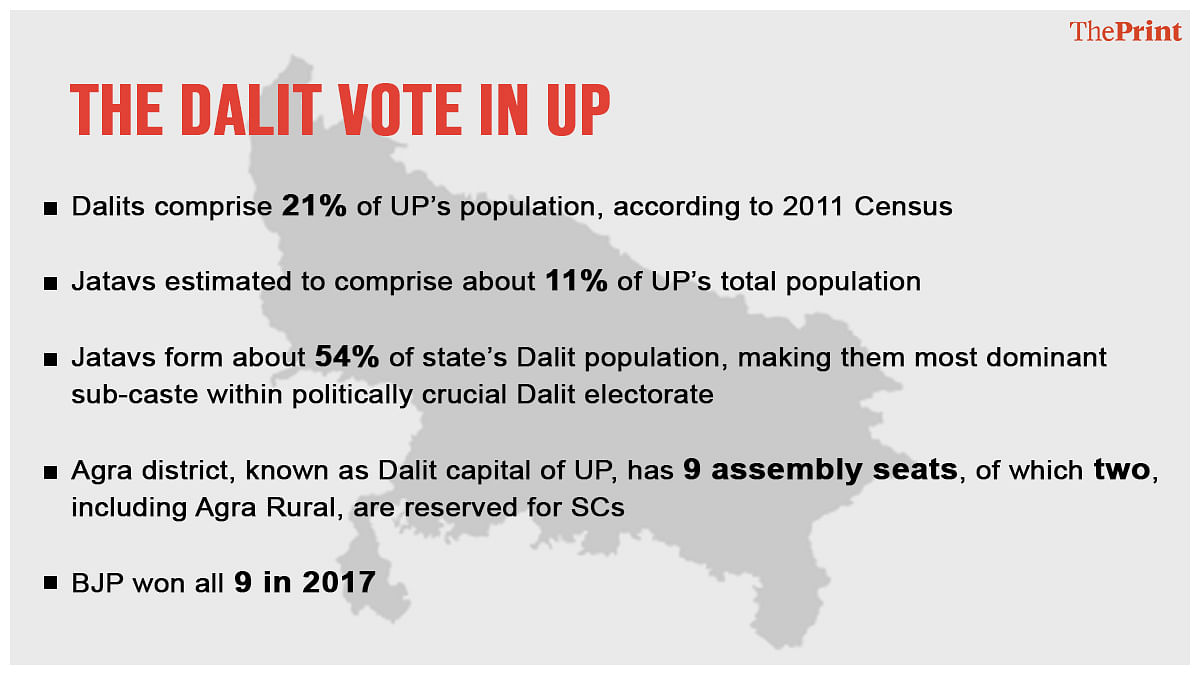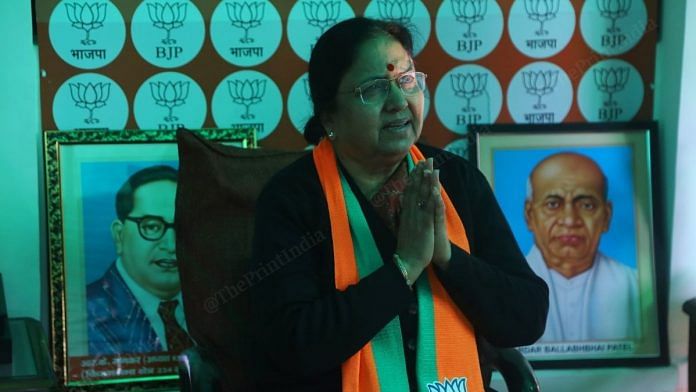Agra: The upcoming Uttar Pradesh assembly election marks the first poll outing in 15 years for Baby Rani Maurya, 65, who has earlier served as Uttarakhand governor and the mayor of Agra.
But she is confident as she enters the race as the fulcrum of a new BJP experiment aimed at wooing a voter group seen as the core constituency of Bahujan Samaj Party (BSP) chief Mayawati, whose party pitches itself as a vehicle for Dalit rights.
“If not Behenji, then Baby Rani Behenji,” said Maurya, also a Dalit, referring to the moniker used for Mayawati.
The BJP’s candidature to Maurya, who started her political career as the first Dalit woman mayor of Agra in 1995, is being seen as part of the party’s larger push to attract Dalit votes from the Jatav sub-caste in the state.
Maurya belongs to the Jatav community, which is also perceived to be the “core vote bank” of the BSP and its supremo Mayawati.
In Agra, the name board outside Baby Rani Maurya’s ancestral home still designates her as “governor of Uttarakhand”, a title she ceased to hold in September 2021.
The driveway that leads up to the porch of the almost 50-year-old house (that looks its age), was bustling with activity on the day ThePrint visited Maurya, who is the BJP’s candidate from the Agra Rural constituency, which is reserved for SCs.
Since her name was announced in the first list of candidates released by the BJP, Maurya has been spending over 10 hours a day conducting door-to-door campaigns in the constituency, starting sharp at 10 am on most days, apart from party and organisational meetings.

Irrespective of the caste dominant in the areas she was going to, her campaign pitch remained the same — to explain to the electorate why she “quit as governor” to run for MLA in the upcoming elections.
“I have resigned from one of the highest constitutional positions in the country to come among you and serve you as a vidhayak. It is my love for Agra and the people here that has inspired me to do that,” Maurya said at a gathering of about 50-odd people during the course of the day’s campaign.
Also read: Mayawati still has a ‘pull’ for Dalit voters. And now BJP is making inroads into Jatavs too
Agra, the Dalit capital of Uttar Pradesh
The district of Agra, known as the Dalit capital of the state, has nine assembly seats, of which two, including Agra Rural, are reserved for the Scheduled Castes. In the last election, all nine were won by the BJP, ostensibly on the back of support from non-Jatav Dalits as well as the upper caste business communities in the district.
However, this time, the party is attempting a different kind of “social engineering” by trying to attract Jatav votes, in response to the campaign push by its main political competitors, the Samajwadi Party and its alliance partner, the Rashtriya Lok Dal.
Maurya, considered to be a veteran leader of the party, is expected to rally Jatav votes around her, a responsibility she is well aware of.
According to the 2011 Census, Uttar Pradesh has a Dalit population of about 21 per cent. The Jatavs are estimated to comprise about 11 per cent of the state’s total population. Of the total Dalit population in the state, the Jatavs form about 54 per cent, making them the most dominant sub-caste within the state’s politically crucial Dalit electorate.

Until the 2017 elections, Dalits as a whole were considered to be the vote bank of the BSP. However, in 2017, the BJP managed to win 17 per cent of the non-Jatav Dalit votes (from sub-castes like Valmikis, Pasis and Khatik), according to a post-poll survey conducted by India Today.
This caused a dent in the BSP’s vote bank. The shift in Dalit votes (along with a shift in votes in certain OBC and MBC sub-castes) was seen as one of the reasons for the saffron party’s sweep in the last elections where it won 312 out of the state’s 403 assembly seats.
This time, however, as the BSP’s large-scale electoral activities seem to be amiss in the run-up to the elections, the BJP is also looking to wean away a portion of its “core” Jatav vote bank.
This push will be especially significant for the saffron camp in western UP, where the SP-RLD alliance is targeting the Jat, non-Jatav Dalit and non-Yadav OBC sub-castes.

Also read: Three factors that tells us who has an edge in UP elections under Covid cloud
‘Perception of Jatav intellectuals has changed’
When asked about this Jatav push by her party, and its chances of successfully cornering Mayawati’s vote bank, Maurya appeared positive.
“The intellectuals among the Jatavs joined Mayawati because they expected her to work for the community. That perception of theirs has changed. You will see that in the results of this assembly [polls],” she added.
Maurya, who calls herself a “beti and bahu” of Agra, said that “apart from the last three years as governor”, she has “always been connected to field politics in Agra”.
After her 1995 win in the mayoral elections, Maurya’s next electoral outing was in the UP elections of 2007, when she contested from the Etmadpur constituency in Agra on a BJP ticket but lost. Over the years, she has also worked as a member of the State Social Welfare Board and a member of the National Women’s Commission.
She was appointed as governor of Uttarakhand in 2018, and resigned last year, more than two years before the completion of her term. She was thereafter made national vice-president of the BJP.
Maurya accepted that politics had “changed” since she last contested an election in 2007.
“A lot has changed with time and I have had to adapt myself to it. I now have a call centre and a team for social media through which I’m speaking to the electorate and even listening to them. There is of course a generational gap. Bacche padh likh gayein hain (children are educated). They are adept at information technology and politics should happen as per them,” she said.
She also said this digital direction that society and politics had taken ensured that “crimes are lesser”.
“How many people know IT that they will commit crime? Pehle jaisa nahi hai ki tamancha leke chal rahe hain,” she added.
Also read: Who will this village in UP vote for in 2022 election? The one Duijji Amma picks
BJP’s ‘Jatav face‘
The waiting area around the porch at Maurya’s residence contains a large flex board of her party. At the bottom left corner of the flex board, a photo of Dr B.R. Ambedkar has been placed. On the other end, a picture of Veer Savarkar ensures that both of Maurya’s “ideological affiliations” are in the frame whenever she sits for a television or video interview.
She said her childhood days growing up in a Dalit neighbourhood in Agra, and her family’s involvement in politics, was what drove her to contest for the mayor’s chair in 1995.
“My father and forefathers were in the shoe manufacturing industry. My father was also in politics and contested elections twice. My brother also contested. So I was also curious and was very interested. Although I didn’t tell anyone, I always nurtured the dream to be in politics,” said Maurya.
She added that she’s “learnt social service” from her father.
“The basti that I belonged to was very poor. People would keep coming to our house asking for little things — someone needed flour, someone wanted sugar, someone asked for a little salt. I always felt that I should help them.”
“After I got married, I told my husband and my father-in-law that I wanted to try my luck in politics. To be honest, I also dreamt of the time that my photo would come in the newspaper, of the time when people would know me and ask for my autograph,” Maurya said.
Maurya still considers that election as the most significant moment in her political career.
“Main ghar se nikalte hi mayor bann gayi (I got out of the house and became a mayor). I had no experience in politics before that,” she said with a hint of pride.
“The day I took my oath, I remember both my father and father-in-law standing next to each other. After I was sworn in, I touched both their feet. That was the front-page photo in all the newspapers in Agra the next morning with the headline that I was the city’s first ‘Dalit ki beti’ who was elected as mayor,” she added.
She said, however, that the “beti” in the headline was as important to her as the “Dalit”.
So, does she consider herself to be the Jatav face of the BJP?
“Today, when I go for my campaigns, I see so many women in ghunghat rushing to meet me and jumping around me. They too are excited to see that a Dalit woman has reached so far in her political journey and is still sticking around,” she said.
“So yes, to answer your question, I am the woman face of the BJP. And since I’m a Jatav, I’m the Jatav face too.”
(Edited by Manoj Ramachandran)
Also read: How is the ‘Yogi will win’ story spreading in UP? Ask the mahaulis






